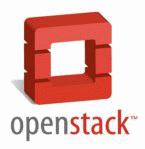
Apple uses the ARM architecture for its chip sets on its iPhones and tablets. Now we are seeing the first uses for ARM-powered architectures on servers to power cloud environments.
Contributors to OpenStack have developed the first ARM powered OpenStack cloud as a zone in TryStack.org, the free sandbox for exploring and testing OpenStack.
The ramifications are evident in a few ways:
- It shows the depth of the OpenStack ecosystem in its ability to attract engineers from the ARM ecosystem to make the project happen. Contributors included engineers from Calxeda, Cisco, Core NAP, Dell, Equinix, HP, NTT and Rackspace Hosting,
- It demonstrates OpenStack’s drive to grow its community and diversify the architectures it can run on. For instance, TryStack cloud was developed to test software on the architectures supported by OpenStack. According to OpenStack, users now have the choice to launch instances in two TryStack zones: an x86 zone running standard hardware and a new ARM-powered zone, both running the latest OpenStack Essex software release.
- And it signals that ARM-powered infrastructures are here to say, which could be a threat to Intel and its dominance in the market with its x86 technology.
The high costs of managing energy hungry servers will drive ARM adoption. Power and cooling costs dominate a server’s cost of ownership. It is more than the cost of the hardware itself by a factor of seven. According to ARMdevices.net, IDC reports that all servers worldwide consumed $44.5 Billion of electricity in 2010 and required ten additional Gigawatt power plants to be constructed.
The Calexeda blog frames the issue well:
In today’s cloud architectures, virtualization is used as a means to provide elasticity, dynamic workload management, and multi-tenant security, all while sharing the same underlying physical systems (which tend to be very large servers). What if, however, we took an opposite approach and were able to provide the same benefits through the use of many smaller servers – a phrase some have coined as physicalization. Suddenly, we move back to a model of dedicated hosting and guaranteed performance, but with the same on-demand access and cloud-based pricing customers are accustomed to. As long as the end-user gets access to a compute resource, and the economics of the infrastructure make sense for the cloud provider, this could ultimately be a win-win for the future of cloud computing.
OpenStack is experimenting with these bare metal servers. The work points to the rise of the ARM-powered cloud and a coming move away from clouds dominated by high-end servers.















